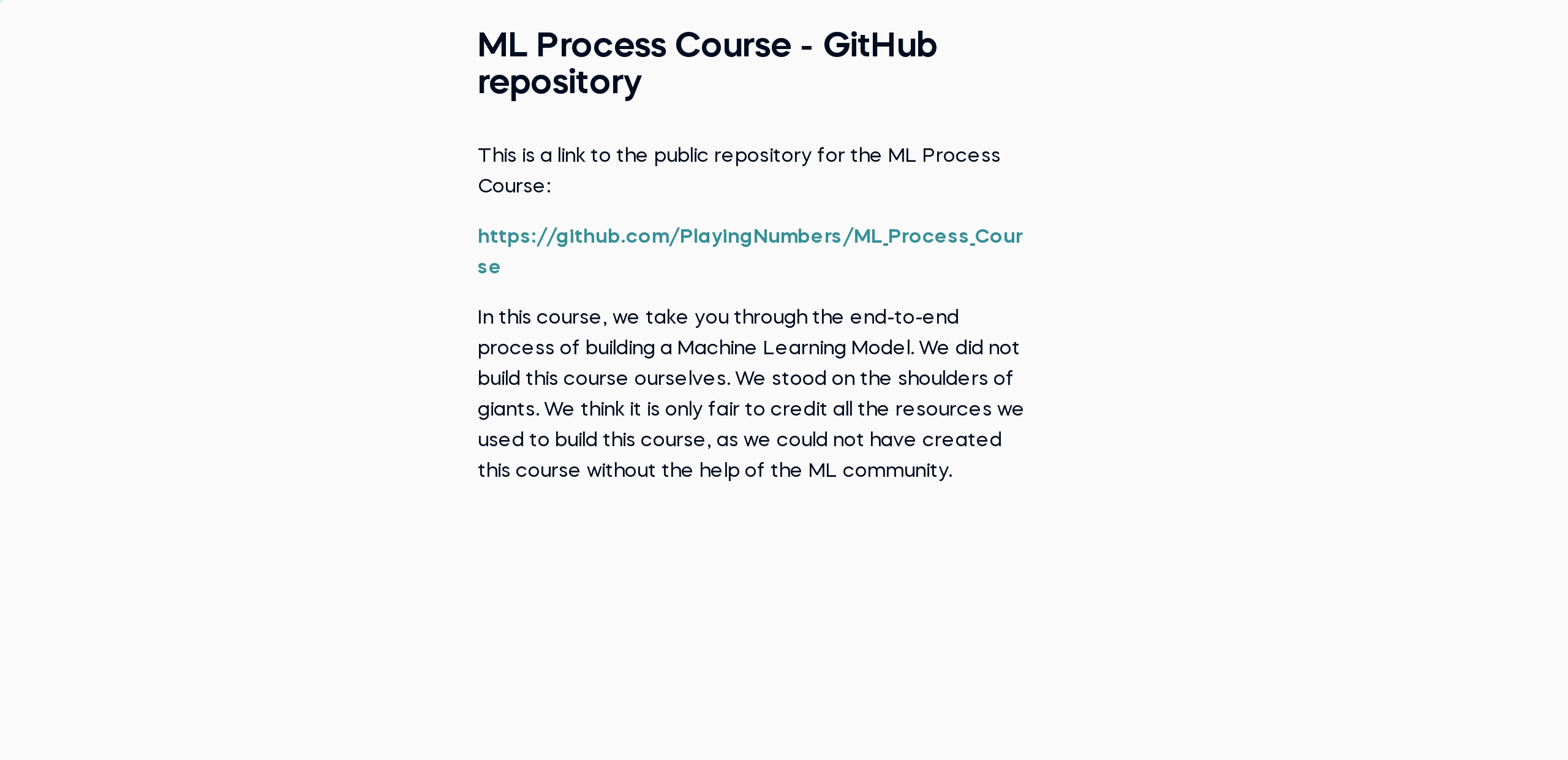The Machine Learning Process A-Z
trending topic
Master the complete machine learning lifecycle: from problem definition to model deployment in production
 Start for Free
Start for Free
What you get:
- 6 hours of content
- 27 Downloadable resources
- World-class instructor
- Closed captions
- Q&A support
- Future course updates
- Course exam
- Certificate of achievement
 Start for Free
Start for Free
What you get:
- 6 hours of content
- 27 Downloadable resources
- World-class instructor
- Closed captions
- Q&A support
- Future course updates
- Course exam
- Certificate of achievement
$99.00
Lifetime access
 Start for Free
Start for Free
What you get:
- 6 hours of content
- 27 Downloadable resources
- World-class instructor
- Closed captions
- Q&A support
- Future course updates
- Course exam
- Certificate of achievement

What You Learn
- Acquire the real-world skills needed to leverage machine learning into actual results
- Master each stage of the machine learning lifecycle – from data collection and preprocessing to model deployment
- Gain hands-on data preprocessing experience prepare your data for machine learning
- Improve your ML model’s results through advanced feature engineering techniques
- Be able to independently manage and execute a complete ML project from start to finish
- Differentiate your data scientist profile by learning invaluable practical skills only experienced data scientists can teach
Top Choice of Leading Companies Worldwide
Industry leaders and professionals globally rely on this top-rated course to enhance their skills.
Course Description
Learn for Free

1.1 Introduction
3 min

1.2 ML Process Course - GitHub repository
1 min

1.3 Meet your instructors
1 min

1.4 How to use this course
1 min

1.5 Additional resources
1 min

1.6 Environment setup
1 min
Curriculum
Topics
Course Requirements
- You need to complete an introduction to Python before taking this course
- Basic skills in statistics, probability, and linear algebra are required
- It is highly recommended to take the Machine Learning in Python course first
- Highly recommended to take the Machine Learning in Python course first
- You will need to install the Anaconda package, which includes Jupyter Notebook
Who Should Take This Course?
Level of difficulty: Advanced
- Aspiring data scientists and ML engineers
- Existing data scientists and ML engineers who want to boost their skills and learn from world-class experts
Exams and Certification
A 365 Data Science Course Certificate is an excellent addition to your LinkedIn profile—demonstrating your expertise and willingness to go the extra mile to accomplish your goals.

Meet Your Instructor

Ken has held data science positions in companies of all sizes - from startups to Fortune 100 organizations. He is a Senior Data Scientist who is very passionate about content creation. Thanks to his friendly delivery style and willingness to share knowledge, Ken Jee is the perfect role model for anyone who wants to start a career in data science. We strongly recommend watching some of Ken’s most popular YouTube videos, such as “How I would Learn Data Science (If I Had to Start Over)”. If you are into learning and sharing your progress with others, you can also check out Ken’s #66DaysOfData hashtag on LinkedIn.
What Our Learners Say
365 Data Science Is Featured at
Our top-rated courses are trusted by business worldwide.